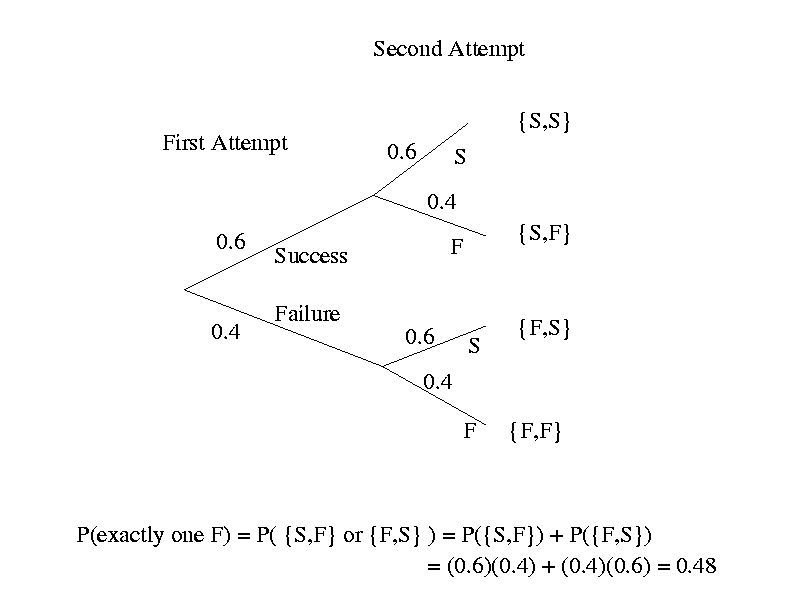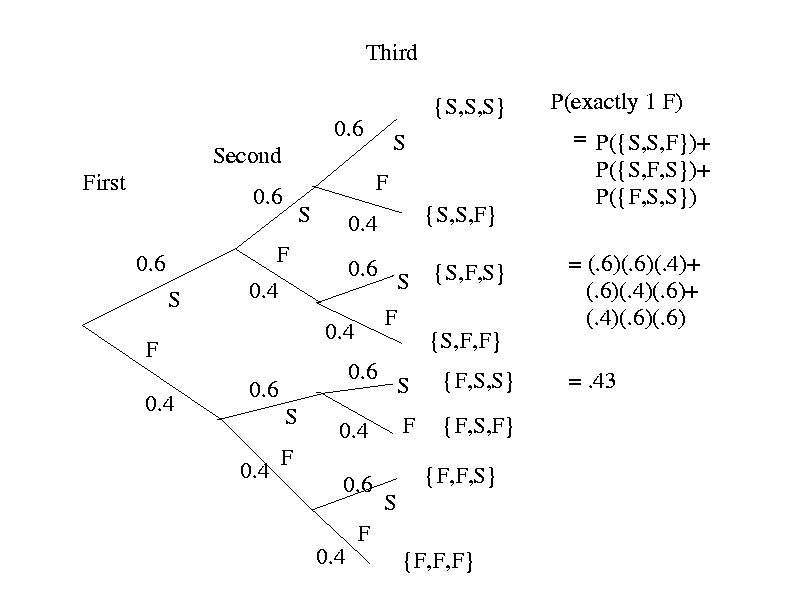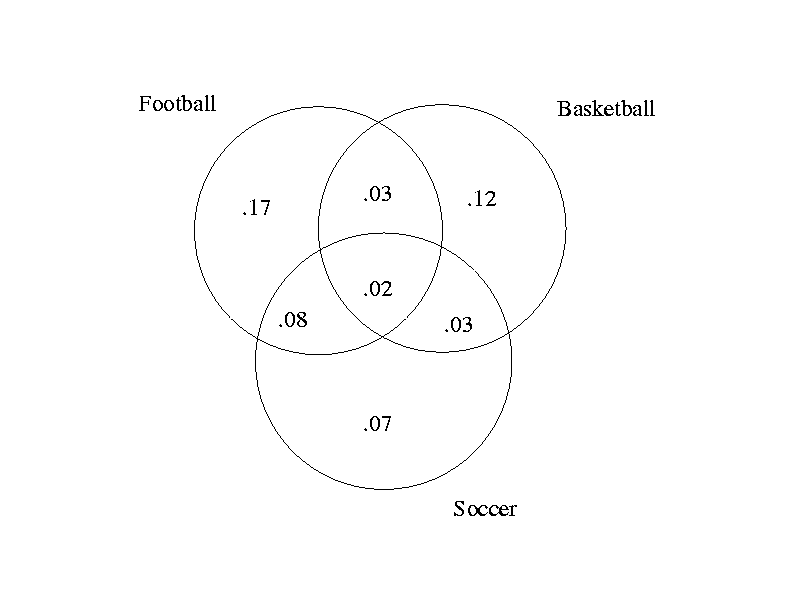Homework #3 -- Suggested Answers
ISBE 3.4, 3.5, 3.7, 3.10, 3.12, 3.13, 3.33, 3.34
3.4
- 12% + 12% + 12% = 36%
- 3*(12%) + 11% = 47%
- 1 - (14% + 11%) = 75%
- 13% + 12% = 25%
3.5
- a) Learning experiment, 2 tasks in a row:

- b) Learning experiment, 3 tasks in a row:

3.7
- (8/12)*(7/11)*(6/10) = 25.45%
- (6/12)*(5/11)*(4/10) = 9.09%
3.10
- 10% + 6% - 2% = 14%
- 100% - 14% = 86%
- 6% - 2% = 4%
3.12
- 17% + 23% = 40%
- 38% + 22% = 60%
- 17% + 38% = 55%
- 100% - 22% = 78%
- 17%
- 17%/40% = 42.5%; 23%/40% = 57.5%
3.13
The Venn diagram:

- .02+.03+.03+.08+.17+.12+.07 = .52
- .17
- .52-.12 = .40
- .17/.52 = .33
- .40/.52 = .77
3.33
- Yes
- Yes
- Yes
3.34
- Chance = 1/4, odds = 1/3
- Chance = 1/2, odds = 1/1
- Chance = 1/13, odds = 1/12
- Chance = 4/13, odds = 4/9
- Chance = 3/51, odds = 3/49
- Chance = 24/51, odds = 24/27. (It can be higher, lower or the same.
In part e we saw that the probability it is the same is 3/51, hence
the probability that it is higher or lower is 48/51. There are as many ways
of drawing 2 cards the first lower than the second as there are ways of
drawing 2 cards the first higher than the second, therefore the probability that
the card is higher than the next is half of 48/51 or 24/51. This calculation
can also be done by conditioning on the value of the first card.)




